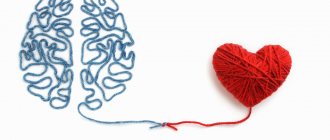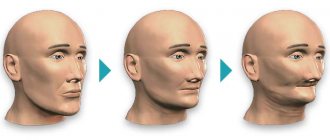People often wonder what human intelligence is and how it relates to psychology. Therefore, in this article I will explain in detail what is meant by this term.
This is a complex of abilities to learn, understand, solve complex issues and find a way out of difficult situations, as well as the ability to think. Society greatly respects this quality and recognizes its value, but does not always characterize it correctly. For many, the traits of an intellectual are encyclopedic knowledge and excellent memory. In fact, they are associated with erudition.
Definition of Intelligence
It represents something of a taste for ideas. The chain is as follows: thinking processes the life experience we acquire and accumulates knowledge, with their help new ideas, discoveries, inventions, and innovations are born. This is a thought process that is impossible without abilities. Some are given more of them, some have less. This is human intelligence. If its level is low, there will be little benefit from knowledge. Readiness and awareness are just tools that help it manifest itself. Having a lot of knowledge without the ability to use it is the same as playing the violin without talent.
What characterize intellectual skills:
- Memory;
- skills of analysis, structuring information and forecasting;
- logic;
- attentiveness;
- zeal;
- reproduction;
- flexibility, depth, inquisitiveness of mind;
- curiosity.
Intelligence level
To solve certain problems, a person resorts to such levels of intelligence as concrete and abstract.
- Specific intelligence allows you to perform everyday tasks using existing knowledge.
- Abstract intelligence allows you to operate with concepts and words.
The level of intelligence can be measured using a special IQ test developed by G. Eysenck. The test is presented in the form of a scale, which is divided into divisions from 0 to 160. Most people have an average level of intelligence - this is 90-110. If you constantly engage in your development, you can increase your level by 10 points. Only 25% have high intelligence (more than 110 points). Among them, only 0.5% of the population reaches more than 140 points. The remaining 25% have low intelligence - less than 90 points.
Low IQ is characteristic of oligophrenics. The average coefficient is observed among most of the population. A high coefficient is observed among geniuses.
Intelligence, according to psychologists, always remains at the level of its development to which a person has arrived. A. Lazursky identified 3 intellectual activities:
- Low – absolute inability of the individual.
- Medium – good adaptation to the environment.
- High – desire to modify the environment.
IQ tests are very popular. However, their diversity is not always a good indicator. The more diverse the tasks in the test, the better, which allows you to test a person for the development of various types of intelligence.
IQ level is influenced by the following factors:
- Heredity and family. Family wealth, nutrition, education and quality communication between relatives play an important role here.
- Gender and race. It is noted that after the age of 5, boys and girls differ in their development. This is also influenced by race.
- Health.
- Country of Residence.
- Social factors.
Types
Until now, there is no unified classification of intelligence. Only one scientist, Howard Gardner, put forward the theory of 8 varieties:
- Spatial, most developed among drivers and designers. Characterizes the ability to navigate the terrain. If you are having difficulty building a route, this is what you need to develop. This can be done by solving problems with finding a way out, painting and sculpting, and tracking the movement of objects.
- Kinesthetic, responsible for the ability to use one’s own body, dexterity, and coordination. Those who have it developed dance and work well. Sports, yoga, and physical activity will help in its development.
- Musical, gives its owners a sense of rhythm, hearing and understanding. The more a person immerses himself in music, dancing, listening, singing, the more he will improve this type of intelligence.
- Linguistic, responsible for written and oral speech, develops when studying foreign languages, reading, communicating with people.
- Logical, allows you to feel like a fish in water among symbols, signs and diagrams. Will be an excellent companion for a scientist and inventor. To improve logic, you need to solve problems, puzzles and puzzles, and build chains.
- Interpersonal, also known as social, is close to empathy. This is the ability to feel and understand people, ease in building relationships, sociability and communication. It is important for creating a family and forming friendships. He is trained at seminars, trainings, and group games.
- Emotional is needed to understand yourself, to live in harmony with your inner world. It is especially difficult to develop, therefore it requires the use of spiritual practices: meditation, purification, reflection.
- Naturalistic is associated with worldview, natural phenomena, and physical laws.
Any type of intelligence in psychology is based on the development of personality traits and determines its individuality.
Types of intelligence
Innate intelligence can become the basis for successful personal development, in choosing your favorite profession, and help you successfully realize your life plans. In the average person, several talents develop harmoniously, but only one, as a rule, is the leading one. The following main types of intelligence are distinguished:
- Natural. A person with this type tends to deeply feel all the beauty of nature. The field of activity in the field of animal husbandry, botany and agronomy is perfect for them.
- The musical type is manifested by high sensitivity to any rhythms and sounds. This type includes singers and musicians.
- The logical-mathematical type of intelligence helps in solving complex logical and mathematical problems. This type of intelligence is mainly observed in detectives, scientists and mathematicians. Such people are distinguished by their isolation.
- Representatives of the linguistic type of intelligence are poets, journalists, writers and public figures. As a rule, they like to do crossword puzzles, read and write stories.
- Thanks to the spatial type, a person can easily remember any event in life. Carriers of this type of intelligence are pilots, sailors, artists, sculptors and architects. They are distinguished by their orientation to terrain of various scales.
- Personal. A person with this type of intelligence has good self-knowledge, which allows him to competently and sensibly approach solving various problems of any complexity.
- Bodily-kinesthetic is associated with touch and tactile perception. Representatives of this type are mainly dancers and workers in applied professions.
- Existential. People with this type tend to think about human existence, as well as put forward theories about the meaning of life, the appearance of people on the planet, and so on.
- Interpersonal intelligence is the ability to understand and interact effectively with other people. People with this type include actors, teachers, politicians and social workers.
You can check your affinity for one of the types using IQ tests.
Structure
The processes in our head are so complex and diverse that they are not subject to structuring according to several criteria. Comparing a talented mathematician with a brilliant composer is difficult and unproductive.
Psychologist Daria Milai
Make an appointment
J.P. Guilford presented a three-dimensional cubic model in which he identified 120 mental abilities (memory, analysis, assessment, expression of thoughts, etc.) and structured them into three components:
- Content (what we think about).
- Operation (as we think).
- Result (what the process leads to).
Some people are able to quickly draw conclusions and make decisions, others are close to flashes of insight with an instant understanding of the essence (remember Archimedes with his “eureka”), others are fixated on the assumption that came first. An intellectually developed person can live happily all his life, while thinking haphazardly and impulsively, without going beyond standards and stereotypes.
How is a person's IQ formed?
IQ level is influenced by several factors, including heredity, environment (family, school, social status of a person). The test result is also significantly influenced by the age of the test taker. At the age of 26, as a rule, a person’s intelligence reaches its peak, and then only declines.
It is worth noting that some people with exceptionally high IQs found themselves completely helpless in everyday life. For example, Kim Pik could not fasten the buttons on his clothes. Moreover, not everyone had such talent from birth. Daniel Tammet gained his ability to remember huge numbers of numbers after a terrible attack of epilepsy as a child.
Main function
The value of mental abilities is that they help you think productively. Thanks to them people:
- self-realization and self-affirmation;
- achieve success and demonstrate talent;
- master new skills and gain knowledge;
- occupy a position in society.
The list can be continued by the fact that intelligence and insight from ancient times to the present day help to survive, get settled, start a family and raise children. Therefore, the main thing for which they are responsible is the ability to integrate into society, adapt and find their place, and to do this profitably and quickly. The mind protects us from dangers. Levels of intelligence in psychology are divided into:
- Short. People in this category are weak and dependent, passive and submissive. They definitely need care and support, the world around them seems complex and aggressive, and the manifestation of initiative and their own talents is meaningless and time-consuming.
- Average. Characteristic of those who have good mental abilities, independence and activity. They easily adapt to society, are not afraid of everyday problems, apply their knowledge and skills, find a social circle and the opportunity to express themselves.
- High. A special caste of “revolutionaries and wizards”, which is above adapting to the world. It is easier and clearer for them to change their environment to suit themselves than to change their own values. Of course, they are a minority.
Main influencing factors
The human mind is quite difficult to define and measure. Intelligence is a combination of knowledge, skills and abilities that accumulate throughout a person's life. Our intelligence is based on several important factors that influence its coefficient:
- genetics;
- feeding habits of a child in the first years of life;
- education and mental stimulation of the child’s mental activity by parents;
- order of birth of children in the family;
- environment.
All this, to one degree or another, affects the mental development of the child.
Genetics
Scientists have long begun to explore the question of how much the level of intelligence IQ depends on genes. For more than a century, studies have been conducted on the influence of genes on mental abilities, which have shown that the percentage of dependence is in the range of 40-80%.
The level of intelligence in a person depends on the structure of the brain and its functionality. These two factors are key. Differences in the parietal-frontal parts of the brain of different people indicate different levels of their IQ. The higher the level of functionality of the frontal areas of the brain, the better it can work: perceive and remember information, solve various problems.
Genetic factors represent the potential that is passed on from parents to the child. They are little studied, but have an important function for the development of mental abilities.
Chromosomal abnormalities that are inherited also affect the level of intelligence. For example, Down's disease, which is characterized by poor mental development of the child. Quite often it occurs in children whose parents belong to the older age group.
Illnesses during pregnancy also affect the baby's mind. For example, rubella, which an expectant mother suffers from, can lead to negative consequences for the baby: loss of hearing, vision, low level of intelligence.
Influence of nutrition
The level of intelligence depends on what exactly we eat in the first years of life, and what the expectant mother ate during pregnancy and breastfeeding. Proper and nutritious nutrition has a positive effect on brain development. The more nutrients, vitamins and microelements the child consumes through the mother and the next few years after birth, the larger the size of the cerebral velum will be. It is responsible for learning and memory.
Consumption of large amounts of fatty acids has a positive effect. Scientists have conducted studies that have proven that if a woman consumes a lot of fatty acids during pregnancy, then children will be significantly ahead of others in their development.
Upbringing
Education is one of the key factors in the development of mental abilities. Even if a person is by nature genetically predisposed to a high IQ level, due to the lack of proper upbringing and quality education, the coefficient will not be higher than average.
Education includes many factors:
- family lifestyle;
- home conditions;
- the level of education;
- parents' attitude.
To study the influence of upbringing, academics separated twins and placed them in different environments. After all, if intelligence is a biological concept, then in theory it should be the same in twins, regardless of living conditions. This is wrong. Studies have shown that children who live in orphanages have lower intelligence levels. Also, the indicator depends on how the parents treat the child: whether they take him to additional clubs, force him to study music, drawing, or instill a love for logic games.
Family birth order
This issue has been studied for a long time, but scientists have not been able to come to a common conclusion regarding the influence of the order of birth of a child and the number of children in the family on their mental abilities. Many studies have shown that first-born children are more mentally developed than other children. In history, most astronauts, presidents, scientists and famous political figures were firstborn.
Many people are interested in the question of why this happens. Birth order is not a judgment. The biggest impact is that a family with one child can devote more time, attention and resources to learning. Testing has shown that first-born children are only 3 points ahead of other children.
Environment
Whether we can use all the capabilities of our brain depends only on us: on our lifestyle, the presence of bad habits. Various diets and toxins affect the development of intelligence throughout life.
If the expectant mother smokes, drinks, or uses drugs, the child is unlikely to be healthy. A person’s mental performance may deteriorate if he drinks or poisons his own body.
Scientists have found that the level of intelligence of people from different countries differs significantly. Some tests have shown the dependence of average IQ on the country's GDP, crime, birth rate, and religion.
Some interesting facts about IQ:
- the higher the coefficient, the more sociable the person;
- breastfeeding increases the score by 3-8 points;
- during the summer holidays the indicator decreases;
- a score above 115 guarantees that a person can cope with any job;
- people with scores below 90 are more likely to become antisocial, end up in prison, or live in poverty;
- the lower the IQ, the more difficult it is for a person to cope with stress;
- The higher the score, the more confident the person is.
Individual characteristics
The traditional concept in psychology distinguishes the classification into three types of intelligence:
- Innate, which cannot be learned and instilled.
- Social-behavioral, which can be traced in actions and statements
- Assessable, it is measurable through psychological tests.
People differ not only in the presence of abilities, but also in their qualitative characteristics, a set that is characteristic of the individual. It is impossible to say unequivocally that a talented artist will be the same in dancing. But the fact that differences in the level of mental activity are noticeable almost from birth is possible.
Face-to-face consultation
What are the features and advantages of face-to-face consultation?
Find out more
Skype consultation
What are the features and benefits of Skype consultations?
Find out more
If a child shows curiosity about the world around him, causes a lot of trouble by unwinding toilet paper, knocking over food, or dragging a domestic cat by the tail - rest assured, this is a sign of high intelligence. But the quiet one, with whom, according to the parents, they were lucky, is unlikely to stand out with a high level of IQ. To evaluate it correctly, assessment techniques are used in the form of tests with different tasks for different age categories.
What does intellectual level depend on?
We receive a certain set of qualities from birth, by inheritance. It is impossible to influence them. But we are talking about only half of the skills. The other is acquired during growing up and depends not only on natural data: the mobility of neurons, reaction speed, the nature of the nervous system, but also on the social environment in which the personality develops.
The emotional connection between the child and mother is of particular importance for the development of mental abilities. Children who are surrounded by love, affection and care show better results on intelligence assessment tests.
Age differences
Measuring intelligence in the same person at different ages will give interrelated results. That is, if a child at 5 years old was distinguished by intelligence and intelligence, indicators of brain activity. most likely to remain high at 20 and 40 years of age. However, a 100% guarantee cannot be given.
For example, Pascal, being 13 years old, participated in meetings of the academic council on mathematics, and Einstein at the age of 15 was expelled from school for poor performance.
Comparing the indicators of different age groups, we will see certain patterns:
- the coefficient increases until the age of 17-18, slowing down during transition periods when the brain is “busy” solving other issues;
- after 20 years, development slows down significantly;
- logical, analytical and arithmetic potential is revealed by the age of 30;
- medicine is easier at the age of 40-45, psychology after 50;
- All years are submissive to art; researchers have not established restrictions.
An interesting fact is that there is no obligatory regression of intellectual activity. Of course, in older people, physiological processes affecting the cerebral cortex are disrupted, but a person gains important life experience that helps him apply the knowledge that he has accumulated.
Gender differences
Although the stereotype about the huge difference in mental abilities of the stronger and weaker sex is constantly discussed in society, no one has yet been able to scientifically substantiate the existence of an “intellectual gap.” Indeed, the average level of intelligence is approximately the same for men and women. The difference is observed in the following aspects:
- girls under 15 develop much faster than boys;
- Males are better able to shine with mathematical talents, while women are distinguished by the development of speech, emotional activity and creative skills;
- The priority of the fair half is non-standard thinking.
Differences in the intellectual development of men and women
Since ancient times, society has been dominated by the view of women as inferior beings and less developed than men. Traditions and laws that do not allow women to engage in certain types of activities have led to the emergence of the myth that women's intelligence is developed significantly lower than men's. Because of this, it was believed that a woman should “know her place” and not interfere in “men’s affairs,” otherwise nothing good will come of it.
The easing of the position of women and their equal rights with men have shown that women's intelligence is in no way inferior to men's. Moreover, women cope with some types of mental activity much more successfully than men.
But the old attitudes still prevail in many countries: in the popular consciousness, women appear more stupid and undeveloped, and they are assigned a secondary and subordinate role. A woman cannot be the head of the family, she cannot inherit parental property, and in some places women are even prohibited from driving a car. There are also ideas about the inferiority of intelligence among women in the lower strata of the population of developed countries. As a rule, such people tend to take wishful thinking. They are guided by highly outdated scientific information, as well as myths and legends, and religious dogmas. They prefer not to acknowledge more current information because it does not correspond to their personal ideas.
Research into the relationship between sex and brain development has been going on for a long time. The available results show that there are differences in the structure of the brain between men and women, but they are not decisive in terms of intelligence: men and women can perform the same tasks equally successfully.
Thus, it has been shown that the volume and mass of the brain in men is slightly larger than in women. However, this did not have a significant effect on mental abilities. Results from studies of the effects of hormones on intelligence have been controversial; It has been shown that high levels of certain hormones can either increase or decrease mental performance.
Other studies have shown that although the male brain is slightly larger, it is markedly more vulnerable to developmental disorders in the womb. Thus, poor nutrition of the mother during pregnancy in many cases reduces the mental abilities of born boys, but this does not affect girls in any way.
Separate studies have been conducted on the perception of stereotypes. And they showed that in societies where women are exposed to adverse psychological influences, their intelligence levels actually turned out to be lower than in societies where women are perceived as equal to men and treated with respect. The thing is that in conditions of constant humiliation, women use to a greater extent those areas of the brain that are responsible for emotional reactions, and those areas that are responsible for solving certain problems remain unclaimed and do not receive development.
Stereotypes influence in other ways; for example, through raising children. From childhood, in traditional societies, girls are taught to do one type of activity and boys to another. Often, girls are not allowed to study physics, mathematics and other sciences, because it is believed that they will not need it in life. Because of this, boys' and girls' brains are trained to different degrees and in different ways, resulting in very different abilities at a certain age.
Diagnostics
Intelligence studies are carried out on the basis of various methods and techniques. All of them are based on two principles: testing and experimentation. For example, logical thinking and pattern identification skills are revealed using Raven's progressive matrices. Amthauer tests specialize in orientation in professional activities. Both the first and second technologies are developed for people of different ages. To evaluate a child, the Goodenough-Harris method is suitable, which gives an assessment based on a child’s drawing. All these developments are decades old, they are unified and give average readings.
Ask a question
LEVEL OF INTELLECTUAL DEVELOPMENT
Intelligence is the general capacity for cognition and problem solving.
The level of a person’s intellectual development determines the success of any activity and underlies other abilities. A teacher with a high level of intelligence is able to act rationally and effectively in a new environment and quickly navigate a changing situation. But communication with children, working with a group of children is a situation that literally changes every minute; it is a constant search for the most effective ways of behavior in a given situation. What distinguishes a master teacher is the desire for new solutions in professional activities, and not blind adherence to stereotypes and familiar methods of interaction.
IQ test*
To simplify administration, only a few tasks were taken from this test.
This test consists of 18 tasks, which are grouped into 6 groups, 3 tasks in each. Each group of tasks has its own instructions. Be careful, don't rush. Read the instructions for each group of tasks carefully. Write down your solution on your answer sheet.
* The test is given from the book: Amthauer R.
Structure of intelligence: Methodological guide. Yaroslavl, 1992.
A. Choose from the proposed answer options the one that, in your opinion, is best suited to ensure that the sentence given in the question acquires the correct meaning. There is only one answer possible.
1. A tree always has...
a) leaves; b) fruits; c) kidneys; d) roots; d) shadow.
2. The opposite of rest is...
a) labor; b) care; c) fatigue; d) walk; d) training.
3. A statement that is not fully proven is called ... a) ambiguous; b) paradoxical; c) hypothetical; d) confused; d) obvious.
B. You are given five words. Four of them can be combined into one group. You must indicate a fifth word that is not included in this group, that is, not related to the meaning that is common to the other four words.
4. a) write; b) chop; c) sew; d) read; d) forge.
5. a) narrow; b) angular; c) short; d) tall; d) wide.
6. a) neck; b) cork; c) leg; d) back; d) pen.
Q. You are given three words. The first and second of them are in a certain relationship with each other. You need to choose one word from the proposed options that relates to the third word in the same way as the second word relates to the first.
7. Clock - time; thermometer - ?
a) device; b) measurement; c) mercury; d) warmth; d) temperature.
8. Action - success; treatment - ?
a) goods; b) labor; c) finishing; d) achievement; d) foam. 9. Novel - prologue; opera - ?
a) poster; b) program; c) libretto; d) overture; d) aria.
D. In each task you will be given two words. You need to decide what each of them means and what their meanings have in common. Then you must find a third word, phrase or expression that denotes the general meaning of the two suggested words.
10. Echo - mirror: ?
11. Picture - fable: ?
12. Whale - pike: ?
D. You are asked to solve a series of arithmetic problems.
13. How many kilometers will a car travel in 9 hours if it travels at a speed of 70 km per hour?
14. 15 boxes of fruit weigh 280 kg, and each empty box weighs 3 kg. How much do fruits weigh?
15. The tree is located 20 m north of the house, and the house is located 15 m north of the pond. What is the distance from the tree to the pond?
E. Each task consists of a series of numbers arranged in a certain order. Your task is to identify the pattern by which the series is constructed and find the number that continues the series in accordance with this pattern.
16. 19 16 22 19 25 22 28 ?
17. 4 6 12 14 28 30 60 ?
18. 5 6 4 6 7 5 7 ?
Processing the results
For each correct answer, 1 point is assigned (except for tasks 10-12). The maximum possible number of points is 21.
18-21 points - high level of intelligence, 11-17 points - average level of intelligence, 10 and below - it will be difficult for you to work as a teacher!
| Correct answers 1. d) 2. a) 4. d) 5.6) 7. e) 8. c) 13. 630 14. 235 16. 25 17. 62 |
Z.c)
6. b)
9. d)
15. 35
18. 8
10. 2 points - reflection; 1 point - physical phenomena. 11.2 points - works of art; 1 point - work, art. ,
12. 2 points - vertebrates, aquatic animals; 1 point - living in water, waterfowl.
CREATIVE SKILLS
A necessary addition to the high intellectual development of a teacher is his creative abilities. After all, the presence of creative abilities implies sensitivity to problems, to the lack of existing knowledge, identification of these problems, search for solutions, putting forward a variety of hypotheses (which sometimes seem crazy to others) and testing them, obtaining a new original result.
. Creative thinking tests*
The proposed tests consist of two tasks (there are 12 in the full version), one of the given tasks is aimed at studying verbal (verbal) creative thinking, and the second - figurative creative thinking.
*
The test of tasks is given in the book: Tests of creative thinking: Methodological manual / Comp. L. V. Oginets. St. Petersburg, 1992. Calculation of results and standards were developed by R. R. Kalinina.
Instructions 1. The newspaper is used for reading. We can think of other ways to use the newspaper. What can be made from it? Write down all your options on a piece of paper.
The task completion time is 3 minutes.
Instructions 2. In front of you is a sheet of paper (Fig. 1), divided into 6 squares, each square shows a circle. Add any details to the main image (to the circle) to create various interesting designs. Draw them.
The task completion time is 5 minutes.
Processing the results
The results are assessed according to the following indicators:
a) fluency - characterizes the fluency, ease, productivity of the creative process and is determined by the total number of given answers;
b) flexibility - characterizes the ability to quickly switch and is determined by the number of classes of response data;
c) originality - characterizes the originality of creative thinking, the unusual use of elements.
Calculation of results
Creative thinking =: N options + N classes + N original options x 1c
N options —
the number of invented options in the first task + the number of completed drawings (usually in 5 minutes teachers manage to complete all 6 drawings).
N classes —
the number of different classes of options in two tasks.
1. Form for task 2
Example of task 1
From newspaper you can make: a boat, a hat, wallpaper the walls, a bag, wrap flowers, pack something, an airplane.
In this case, 7 options for using the newspaper are proposed (N options = 7). However, the options “boat”, “hat” and “airplane” belong to the same class - “paper crafts”, and the options “wrap flowers” and “pack something” - to the class “packaging, wrapping material”. Thus, in this example the number of different classes was 4.
Example of task 2
From the proposed 6 circles, the following images were obtained: sunflower, chamomile, clock, cat, chicken, turtle.
Here N options = 6. However, the drawings “sunflower”, “daisy” belong to the same class - “flowers”, and the drawings “cat”, “chicken” and “turtle” - to the class “animal body” (an animal, however, can be drawn in such a way that a given circle will be used to draw his head, and this will be a different class of options). Thus, in this example the number of different classes was 3.
Thus, in this case, N options = 13 (7 + 6), and N classes = 7 (4 + 3).
N original options -
number of original answers. An answer that appears once in 20-40 people is considered original.
L - coefficient; can take values from 2 to 4, depending on the degree of originality of the proposed option. 2 points are given for an option that occurs once in 20 people, 3 points - once in 30 people, 4 points - once in 40 people.
For obvious reasons, listing original answer options of varying degrees is impossible. However, when analyzing the answers, you need to know that the following cannot be classified as original answers:
• for the first task
(using newspaper) - a boat, a hat, a fan, papier-mâché, a bag, a placemat for something (as a tablecloth or in a trash can), etc.;
• for the second task
(complete the circles) - someone’s head (Fig. 2) (person, animal, toy), someone’s torso (person, animal, toy), fruit, vegetables, ball, balloon, etc.
Analysis of results
| Rice. 2. Example of task 2 |
Use the table below to analyze your results.
| Level | N options | N classes | N original answers xb | Creative thinking |
| Short | Less than 8 | Less than 5 | Less than 12 | |
| Average | 8-13 | 5-7 | 2-7 | 12-28 |
| High | 14 or more | 8 or more | 8 or more | 29 or more |
REFLECTION
One of the important qualities of a teacher is the ability to analyze one’s own activities. After all, reflection is the ability to realize and analyze one’s behavior, feelings and thoughts. It is obvious that for effective educational activities it is necessary to be able to analyze the reasons for successes and shortcomings in it in order to systematically improve the level of one’s professional skills. Analyzing his relationships with children, a master teacher identifies and corrects errors in communication, and strives to prevent them in the future.
A master teacher is distinguished by impeccable knowledge of his field. This applies to educational activities, methods of teaching and upbringing, and organization of children’s development. Analyzing the quality of your activities, it is necessary to monitor what is new in psychological and pedagogical science, to make changes to the methodology and content of training and education. All this requires systematic work on oneself, sharing experiences with work colleagues, discussing classes and other forms of work with a methodologist and psychologist.
The following psychodiagnostic techniques are aimed at identifying the teacher’s ability to analyze his activities.
Check what kind of teacher you are*
This test is a modification of the test “Check what kind of teacher you are” (Stankin M.I. Professional abilities of a teacher: Acmeology of education and training. M., 1998), intended for school teachers. The modification concerned changing the wording of the questions for the purpose of using it in a preschool educational institution.
*Modified by R.R. Kalinina.
Instructions. Please answer the questions below with “yes” or “no”.
1. Are you willing to take on the task of preparing a lesson on a new topic that does not have a standard development?
2. Is it easy for you to give up those methods of influencing children that you have successfully used before?
3. Did you quickly stop remembering with regret about your past school and student years after becoming a teacher?
4. Do you resolutely refuse standard behavior in various life situations?
5. Do you know how to give an unmistakable description of your students, dividing them into strong, average and weak according to mental abilities and moral qualities?
6. Are you able to give up personal likes and dislikes when working with children?
7. Do you think that there is no universal working style and that at different stages of work in different situations you need to be able to apply different styles?
8. Is it easier for you to avoid conflict with children than with the administration of a preschool educational institution (DOU)?
9. Do you want to decisively abandon the stereotypes of education and training recommended at the university and cultivated in your preschool educational institution?
10. Is your first intuitive impression about the qualities of your pupil often correct?
11. Do you often explain failures at work not by objective reasons, but by your own shortcomings?
12. Do you feel a lack of time to work effectively?
13. Do you think that even without your presence and constant control, the children in your group will behave adequately?
Processing the results. The table shows the points that are assigned depending on the answer to each question. Sum up the number of points you have scored using this table.
| Question no. |
| Yes |
| No |
0-5 points. You are a very weak teacher. It is difficult for you to communicate with children. You need to seriously work on yourself and master the methods of education and training.
6-10 points. You have many gaps in your preparation for working with children's groups. Consult with colleagues and experienced teachers more often. Regularly study pedagogical and psychological literature.
11-15 points. You are a good, knowledgeable teacher. However, consider whether you are striving for too much perfection. Give your children more freedom, look at them as your assistants, while not forgetting to control the execution of assignments.
16-20 points. You are a competent, experienced teacher. You avoid patterns in your work. Perform your duties creatively. Avoid being too categorical in your assessments of people. Pay attention to your relationships with colleagues and administration representatives - are you the cause of the tension?
Teacher self-esteem"1
Instructions. Carefully read the words that characterize individual personality traits.
1) From the proposed list, write down in one column 10-20 qualities that characterize your ideal teacher (let’s call it “my ideal”), in the second - traits that a teacher should not have (“anti-ideal”).
2) Next to each quality you highlight, put a point from 0 to 10, depending on how pronounced this quality is in you (0 points - if the quality is completely absent, 10 points - if this quality is clearly expressed).
Analysis of results
Count the total points in each column. After this, calculate the self-esteem indicator: C = Sum of “ideal” points / Sum of “anti-ideal” points. Analyze the result.
C < 0.6 - low self-esteem. The teacher sets himself lower goals than those he can achieve. Exaggerates the significance of failures and is in dire need of support from others. He tends to underestimate his strengths and capabilities.
0.6 ^ C < 0.8 - low self-esteem. In a new activity, the teacher is inclined to seek help from colleagues rather than independently solve the tasks assigned to him. In familiar activities he feels more confident, sensitively responding to the opinions of others. Easily loses faith in his abilities.
0,8 <,
C < 1.2 - adequate self-esteem. The teacher objectively evaluates his successes and failures, the approval and disapproval of others. He is characterized by a critical attitude towards himself and the assessment of others.
* The test is given in the book: Practical psychology for teachers / Ed. M.K. Tutushkina. M, 1997. Interpretation developed by R. R. Kalinina
| Accuracy | Carelessness | Thoughtfulness | Susceptibility | Cheerfulness |
| Pride | Coarseness | Caring | Envy | Shyness |
| Grudge | Sincerity | Sophistication | Moodiness | Credulity |
| Slowness | Daydreaming | Suspiciousness | Vindictiveness | Perseverance |
| Ease | Tenderness | Nervousness | Indecisiveness | Incontinence |
| Charm | Touchiness | Caution | Suspicion | Responsiveness |
| Pedantry | Mobility | Integrity | Poetry | Swagger |
| Indifference | Contempt | Reasonability | Determination | Self-forgetfulness |
| Restraint | Shyness | Patience | Cowardice | Compassionate |
| Passion | Perseverance | Compliance | Cold | Enthusiasm |
1,2 <>
C < 1.4 - increased self-esteem. The teacher in a new situation for him feels confident, even somewhat arrogant. In case of failure, he is able to analyze mistakes, listen to the opinions of colleagues, and correct his own behavior.
C ^ 1.4 - inflated self-esteem. The teacher sets higher goals for himself than those he can achieve. Is emphatically independent of the approval of others. He may be characterized by conceit, arrogance, and a desire for superiority. Such a teacher is not sufficiently self-critical in assessing his successes and failures.
2
WHAT HAPPENS WHEN WE FIGHT Without understanding the differences that exist between men and women, it is very easy to lead to a quarrel...
WHAT IS CONFIDENT BEHAVIOR IN INTERPERSONAL RELATIONSHIPS? Historically, there are three main patterns of differences that exist between...
What to do if there is no reciprocity? And now let's come down from heaven to earth. Have you landed? Let's continue the conversation...
WHAT AND HOW THEY WRITTEN ABOUT FASHION IN MAGAZINES AT THE BEGINNING OF THE XX CENTURY The first issue of the Apollo magazine for 1909 began, in fact, with a policy statement from the magazine’s editors...
Didn't find what you were looking for? Use Google search on the site:
Recommendations for increasing the coefficient
5 practical tips for training your brain activity and increasing your IQ that you can use every day:
- Challenge your brain, solve math problems, learn foreign languages, learn to play a musical instrument.
- Talk to educated people. By having a conversation and understanding the way smart people think, you will benefit for yourself.
- Play computer games that require strategy development and train your reactions.
- Read books, it develops vocabulary and erudition.
- Play sports, lead a healthy lifestyle.
How are IQ tests developed and what scores are considered normal?
There are no uniform standards for the development of tests to determine IQ, but all tests are divided by age categories. Therefore, the same IQ indicator for a child and a student does not mean that the student is stupid and the child is smart. After all, they have different age categories of tests.
The authors of the tests also write instructions for them, which explain how to pass them. These instructions are needed to minimize error. The tests include tasks on reasoning, memory, logic, and acquired knowledge. The average score is considered to be 100: tests are designed in such a way that the majority of results correspond to this indicator. The results of the test takers are then compared with this average result.
It turns out that the average IQ test score is the level of most people. Therefore, an average level of intelligence is just normal. There are deviations from the average level in the results, because this can be influenced by many reasons: excitement, fatigue, haste. Only scores less than 70 points can be considered a sign of mental retardation. A high level of intelligence with a score above 130 points is found in 2.2% of people – this data is provided by researcher Stuart Ritchie in his book “Intelligence: Everything That Matters.” At the same time, 68.2% of those tested correspond to the average level.
Source: book Intelligence: All that Matters
Emotional intellect
The concept of IQ includes the ability to distinguish between emotions, understand what motivates other people, what they want, what they strive for and what they achieve. It is he who helps manage his own and other people’s feelings to achieve goals.
Our mind can be roughly divided into two halves: rational, which is responsible for cognition, thoughts, conclusions, and impulsive, devoid of logic, but no less influential. Ideally, we should balance and make friends between these parts.
The IQ component is character. Emotional appearance includes skills:
- believe in yourself;
- sympathize;
- control emotions;
- be able to distract yourself from unpleasant experiences;
- strive for a goal;
- find motivation.
Types of intelligence
Depending on the area of application of mental abilities in psychology, several types of intelligence are distinguished.
Logical intelligence
Based on solving mathematical problems. Operations with numbers and the search for patterns are the main area of application of this type of intelligence. The development of logical skills begins in early childhood and continues throughout life.
Spatial intelligence
It consists of observing a certain process with the aim of repeating it independently. In this case, several categories can be distinguished:
Physical intelligence. It consists of the ability to control your body, repeat and learn complex dance movements, develop the ability to quickly react, rearranging your body into the desired position. Social intelligence. Characterized by a person’s ability to find a common language with other members of society. Spiritual intelligence. It is about self-improvement and self-knowledge. A person must always progress and strive for a set goal, the achievement of which is possible only with constant self-development. Creative intelligence. It assumes that a person has creative talent in a certain area: music, literature, fine arts, etc. Emotional intelligence. It consists of a person’s ability to think analytically, realize their needs and look for ways and methods to satisfy them
It is very important to be able to communicate with other members of society, feel their mood and analyze their behavior; these are also signs of high intelligence. On the basis of this, productive interaction is formed
Social intelligence
It helps to correctly interpret the behavior of others and build relationships between people. The better it is developed, the more adapted you are to life in society. If this part of mental activity is highly developed, it will not be difficult for you to predict the reaction of your interlocutor or immediately make a judgment about someone without thinking for a minute. It is more a gift of accommodation than of deep and thoughtful understanding.
What is IQ?
IQ (intelligence quotient) is a quantitative indicator of the level of intelligence in comparison with the level of the average person. The statistical average is considered to be a person of the same age and development as the one for whom this coefficient is measured. It turns out that IQ does not show the level of intelligence itself, but its compliance or deviation from the norm, i.e. middle level.
Average IQ can be compared to average height. For example, according to research in Kazakhstan, the average height of women is 164.4 cm, men - 177.5 cm. We compare a person’s height with the average and give an assessment: if the height exceeds the average, then we consider the person tall, and vice versa. It is important to understand that this average level is not constant, but depends on various factors. The situation with determining IQ level is approximately the same.
What does IQ level affect?
Theoretically, it can be assumed that the level of intelligence affects learning ability, career success and, indirectly, income.
Steward Richie says that there is a slight dependence. People with higher intelligence improve their skills faster and more willingly, become professionals more often, and as a result, they have higher income. But this dependence is not ideal: a high IQ does not guarantee success if a person does not make an effort. In addition, personal qualities are also important: responsibility, activity, attentiveness. Each field of activity has its own set of important qualities. It turns out that the level of intelligence affects learning ability and career growth, but they do not depend solely on it.
Steward Ritchie revealed another interesting pattern: people with high IQ levels live longer. Their risk of death is three times lower than those with a low IQ. It is difficult to explain this dependence, but two theories seem more reliable. The first is that people with high levels of intelligence have higher incomes. This allows them to eat healthy, receive quality health care, and maintain a healthy weight and level of physical activity. Secondly, they analyze faster and better, so they avoid dangerous situations. And if they fall into them, they often survive because they act more rationally.










